WindSim 12.0 | Overview & new additions
WindSim delivers a modular approach that guides you every step of the way.
Click on the Modules below to learn more about the updates and improvements included in the latest version.
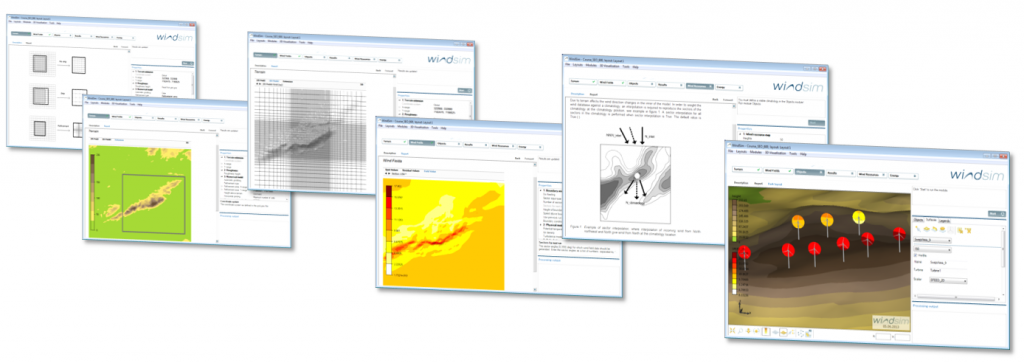
The Terrain module generates a 3D model of the area around your wind farm based on elevation and roughness data. You can model forested areas and physical objects, such as buildings, to include the influence these have on the wind flow.
In WindSim 12.0 Geometrical grid expansion has been implemented, which allows faster expansion in the vertical direction compared to the standard Arithmetical method. The cell height in the grid increases exponentially with each expansion step. This results in a denser resolution in the lower part of the grid and uses fewer cells overall.
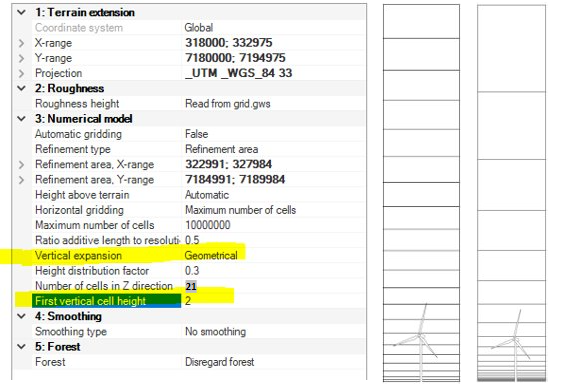
- Determines the starting point for wind flow simulation.
- Default value in WindSim is 2m.
- Balances accuracy and computational efficiency.
- Affects resolution of wind flow characteristics at different heights.
- Higher height leads to coarser resolution, while lower height increases computational time and complexity.
- Terrain and weather conditions of the site should be considered.
- Complex terrain or vegetation may require a lower first vertical cell height for accurate results.
- Relatively flat and uniform sites may use a higher first vertical cell height.
The Wind Fields module generates the wind database. The module simulates how the terrain affects local wind conditions in terms of speed-ups, direction shifts, and turbulence. Various physical and numerical models are available, with different strengths, e.g. with respect to computing speed or robustness.
New solver setup:
- Enabled by integration of the HYPRE library. Supports high-performance computations and accurate simulation results.
- Features the BoomerAMG preconditioner and solver. Available with the latest version of Phoenics.
- Utilizes algebraic multigrid (AMG) algorithm for linear equation solver in GCV algorithm.
Benefits of the new solver setup:
- Improved convergence behavior for large models with parallel option.
- Enables future development possibilities, such as solving on semi-unstructured grids.
New boundary condition at the top (Diffusive link):
- New option in WindSim for controlling flow of air.
- Sets fixed pressure at the top of the model and imposes a constant speed.
- Enables lowering of model height and using fewer cells vertically.
- Optimizes computational resources and improves efficiency.
- Particularly useful for offshore simulations
- Helps optimize computational resources in offshore modeling scenarios.
Simplified values for convergence:
- Exploratory (0.005): Rapid evaluation of simulation scenarios with lower accuracy. Useful for screening and initial analysis. Recommended for exploratory or preliminary analysis.
- Accurate (0.0005, default): Designed for high accuracy simulation results. Suitable for critical simulation applications where accuracy is paramount. Results are trustworthy and reliable. Recommended as the default for most simulation scenarios.
- Manual: Users can override the default settings and define their own convergence level.

Reduced wind database horizontally (XY reduced wind database option):
- Option activated in WindFields module
- Complete wind simulation performed on the entire grid, subsequent calculations run only on the internal part, where points of interest are typically located
- Allows performing modules only on the internal part of the horizontal grid.
- Applicable when a refinement type (Refinement area, Refinement file, or Actuator Disc) is defined.
- Enhances simulation speed and efficiency.
- Maintains a uniform grid inside the refined area.
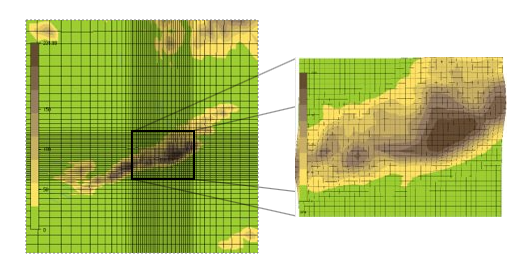
Placement of turbines and measurement points is done in the Objects module. Its fully interactive 3D interface is easy-to-use. A significant benefit of the 3D tool is that you can inspect the visual layout of the wind farm from different distances and angles. Measurement data is given either as frequency distributions or as time histories.
Power curve header information about IEC turbine class:
- The power curve header has been enhanced to include IEC turbine class information
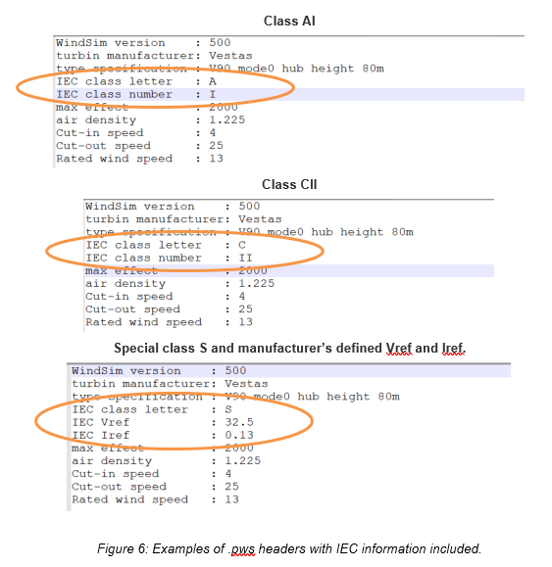
The Results module allows easy inspection of flow variables such as wind speed, directional shifts, turbulent intensity, and the vertical component of the wind. You specify the heights above ground and the wind sectors you are interested in.
The wind resource map is established by weighting the wind database against measurements. If several measurements are available, the wind resource map will be based on all of them by interpolation. The wind resource map is the basis for the energy optimization.
Export of wind resource maps to Surfer format “.grd”:
- Generates a .grd file containing grid information and variable values at each node.
- Facilitates data import and visualization.
- Compatibility with various software tools.
- Users can work with wind resource maps in their preferred software.
- Enhances convenience and accessibility of data sharing and analysis.
- Files located in the “project\layout\energy\grd” and “project\windfield\grd” directories.
- Link to the exported files provided in the report.
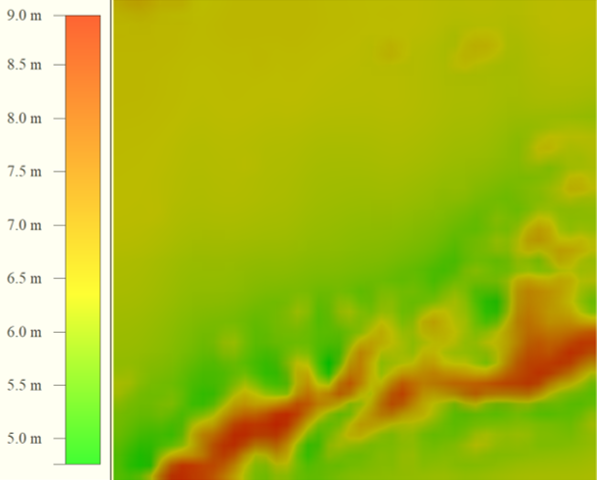
The Energy module is where you calculate the annual energy production (AEP) for each turbine within the wind farm. Wake losses are also identified. And, you can compare alternative park layouts here.
AEP and IEC report exports:
- The AEP and IEC results are tab-separated text files that provide data on Annual energy production and turbine class suitability according to IEC 61400-1 ed. 4 (2019) standards.
AEP Results file:
- Provides information on the annual energy production of a wind farm.
- Includes data such as average wind speed, Weibull parameters, energy and waked energy, extreme wind (50-years), shear exponent, inflow angle, and information about the nearest turbines.

IEC Results file:
- Contains data related to turbine class suitability analysis based on IEC 61400-1 ed. 4 (2019) standards
- Includes information about the turbine class and related Iref and Vref values.
- Provides data on extreme wind (50-years), Weibull parameters, wind distribution analysis results, mean effective turbulence intensity, turbulence analysis results, IEC inflow angle analysis results, shear exponent minimum and maximum, and extreme turbulence analysis results.

- The Matrix table export is a tab-separated file that provides a sector-wise breakdown of turbine energy production, energy including wake, turbulence, and speed frequencies.
- The turbulence matrix includes data on Ambient and Effective turbulence and their extrapolation when observed data is missing.
- This allows for the analysis of specific cases such as: Directional curtailment, sector management systems, IEC analysis checks, and more.
- The tab-separated format makes it easy to import the data into other software for further processing.
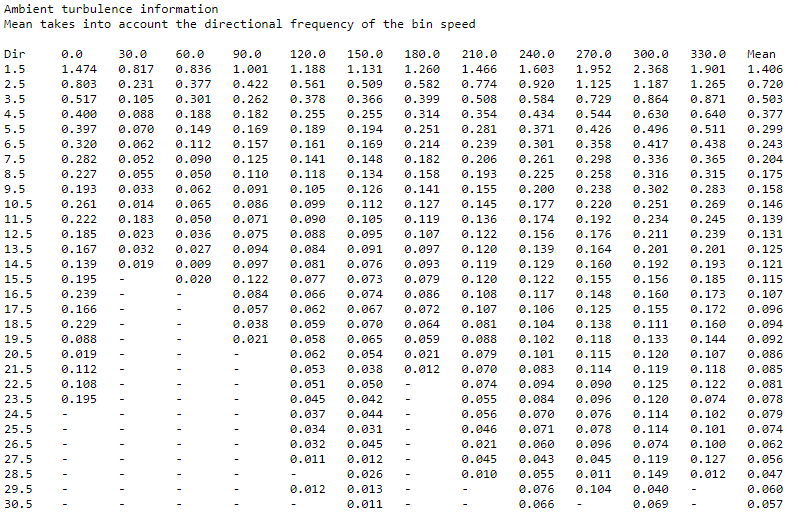
- Utilize wind rose representation of climatology.
- Converted and transferred to turbine positions.
- Inaccuracies due to interpolation of wind speed frequencies, especially with significant directional shifts.
- Minor impact, but can reach several percent in strongly guided climates.
- Direct transfer of measurement time series to turbine positions.
- Avoids conversion to wind rose.
- Calculates turbine power output based on instantaneous wind speed.
- Assumed zero power output in the absence of measurements.
- Retains direct transfer of measurement time series.
- Changes normalization of Annual Energy Production (AEP).
- Disregards data gaps and averages power output only over measurement instances.
- Results in relatively higher AEP values that align more with other methods in the report.
The User Interface of the software has undergone several improvements, including the addition of a postprocessing feature for Self-Organizing Map (SOM) cases.
The Wind Resource and Energy module now incorporates SOM results by weighting frequency-based sectors, as typically used in WindSim.
Please note that the postprocessing feature is currently in beta testing, as some energy export and IEC calculation functionality is not yet available. For more information, please refer to the guide “GettingStarted_Meso-microscale_coupling.pdf“.
Azure Virtual Machine
- Windows 11
- WindSim installed
- Located in the same data center as WindSim Accelerator with very high bandwidth connection
- No need to have anything installed in your own network
![]()
